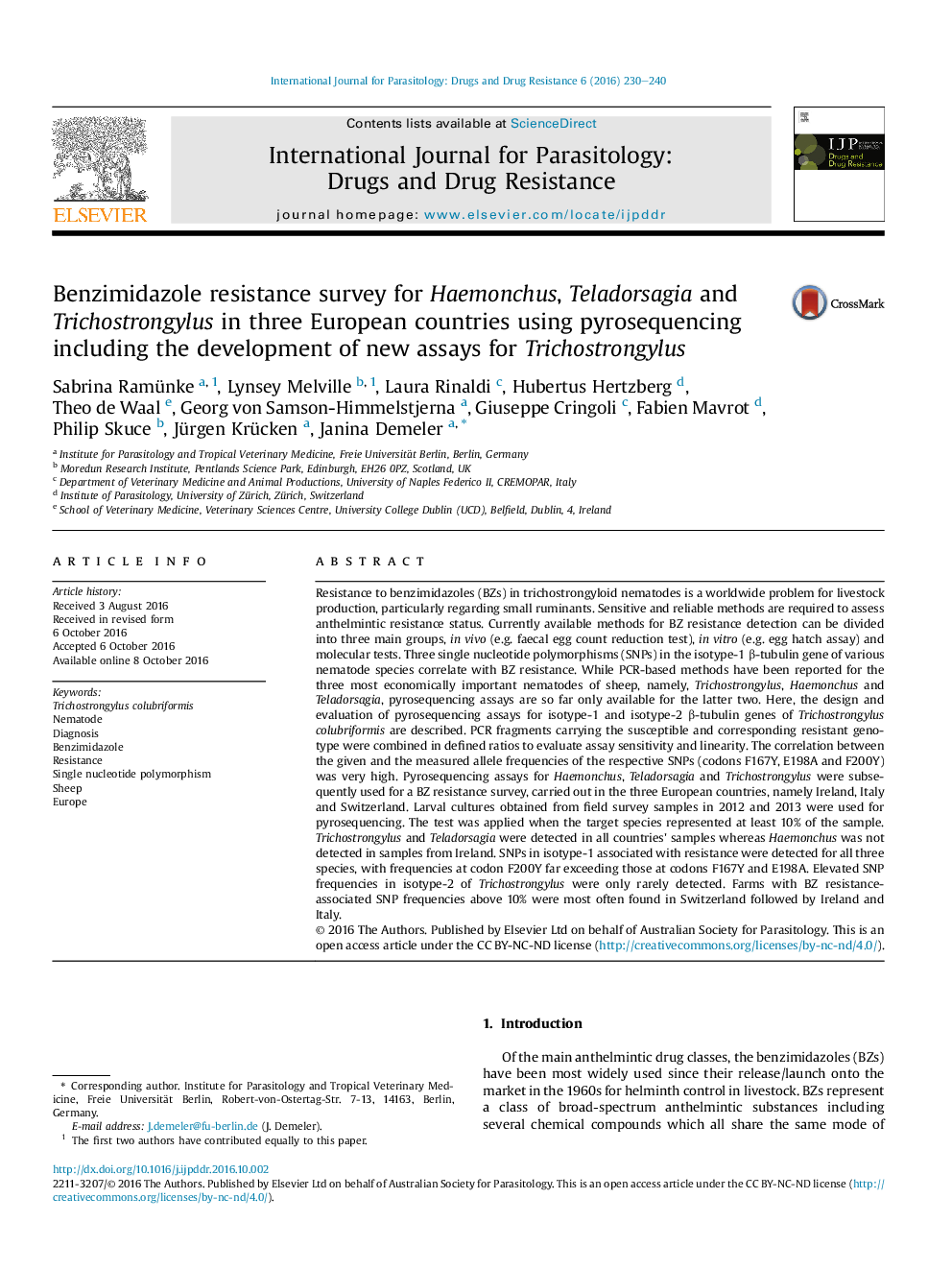| کد مقاله | کد نشریه | سال انتشار | مقاله انگلیسی | نسخه تمام متن |
|---|---|---|---|---|
| 6481762 | 1401036 | 2016 | 11 صفحه PDF | دانلود رایگان |

- Successful development of a pyrosequencing assay for Trichostrongylus.
- Resistance survey revealed high number of SNPs present in all three countries.
- SNP at codon 200 most prevalent in European trichostrongyloid populations.
- Low number of SNPs found in Italy corresponds to FECRT data.
- Pyrosequencing successfully employed as a tool for large scale surveys.
Resistance to benzimidazoles (BZs) in trichostrongyloid nematodes is a worldwide problem for livestock production, particularly regarding small ruminants. Sensitive and reliable methods are required to assess anthelmintic resistance status. Currently available methods for BZ resistance detection can be divided into three main groups, in vivo (e.g. faecal egg count reduction test), in vitro (e.g. egg hatch assay) and molecular tests. Three single nucleotide polymorphisms (SNPs) in the isotype-1 β-tubulin gene of various nematode species correlate with BZ resistance. While PCR-based methods have been reported for the three most economically important nematodes of sheep, namely, Trichostrongylus, Haemonchus and Teladorsagia, pyrosequencing assays are so far only available for the latter two. Here, the design and evaluation of pyrosequencing assays for isotype-1 and isotype-2 β-tubulin genes of Trichostrongylus colubriformis are described. PCR fragments carrying the susceptible and corresponding resistant genotype were combined in defined ratios to evaluate assay sensitivity and linearity. The correlation between the given and the measured allele frequencies of the respective SNPs (codons F167Y, E198A and F200Y) was very high. Pyrosequencing assays for Haemonchus, Teladorsagia and Trichostrongylus were subsequently used for a BZ resistance survey, carried out in the three European countries, namely Ireland, Italy and Switzerland. Larval cultures obtained from field survey samples in 2012 and 2013 were used for pyrosequencing. The test was applied when the target species represented at least 10% of the sample. Trichostrongylus and Teladorsagia were detected in all countries' samples whereas Haemonchus was not detected in samples from Ireland. SNPs in isotype-1 associated with resistance were detected for all three species, with frequencies at codon F200Y far exceeding those at codons F167Y and E198A. Elevated SNP frequencies in isotype-2 of Trichostrongylus were only rarely detected. Farms with BZ resistance-associated SNP frequencies above 10% were most often found in Switzerland followed by Ireland and Italy.
129
Journal: International Journal for Parasitology: Drugs and Drug Resistance - Volume 6, Issue 3, December 2016, Pages 230-240